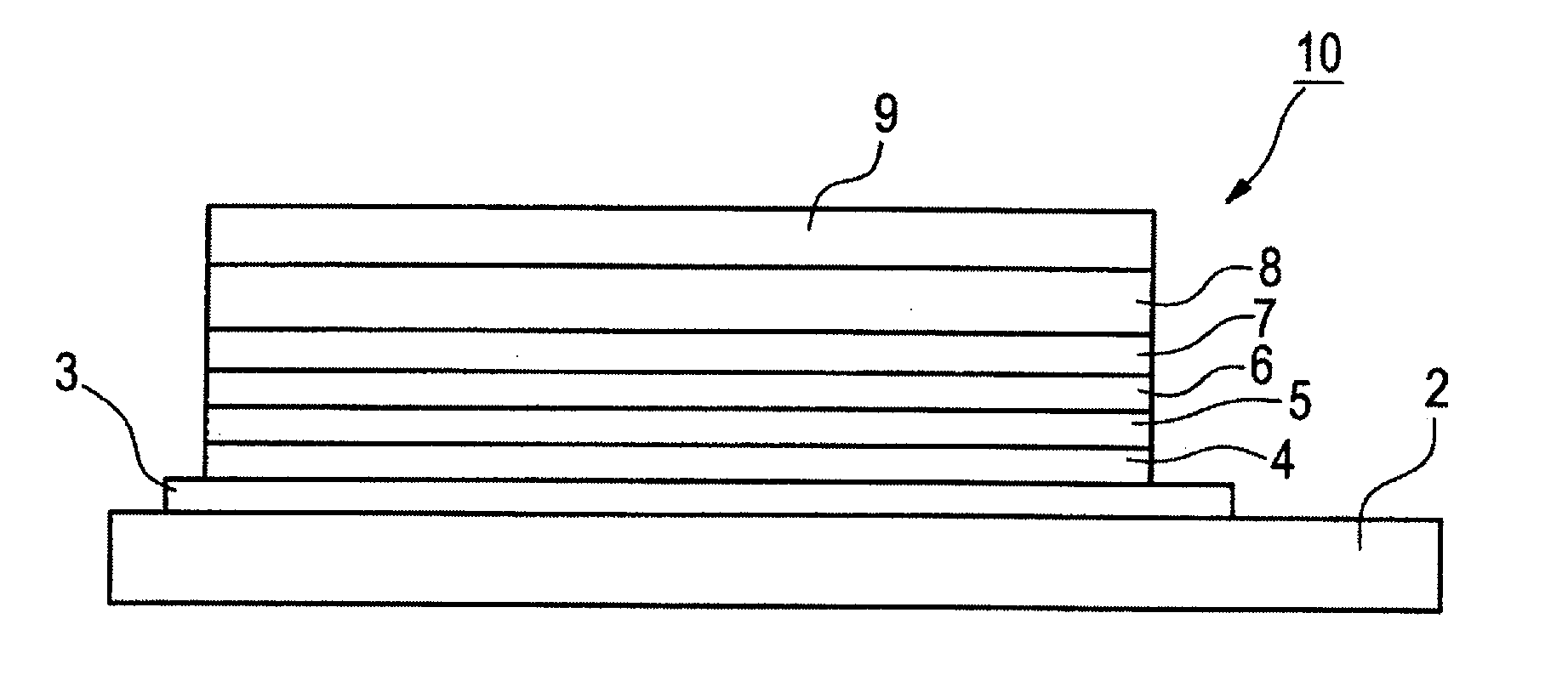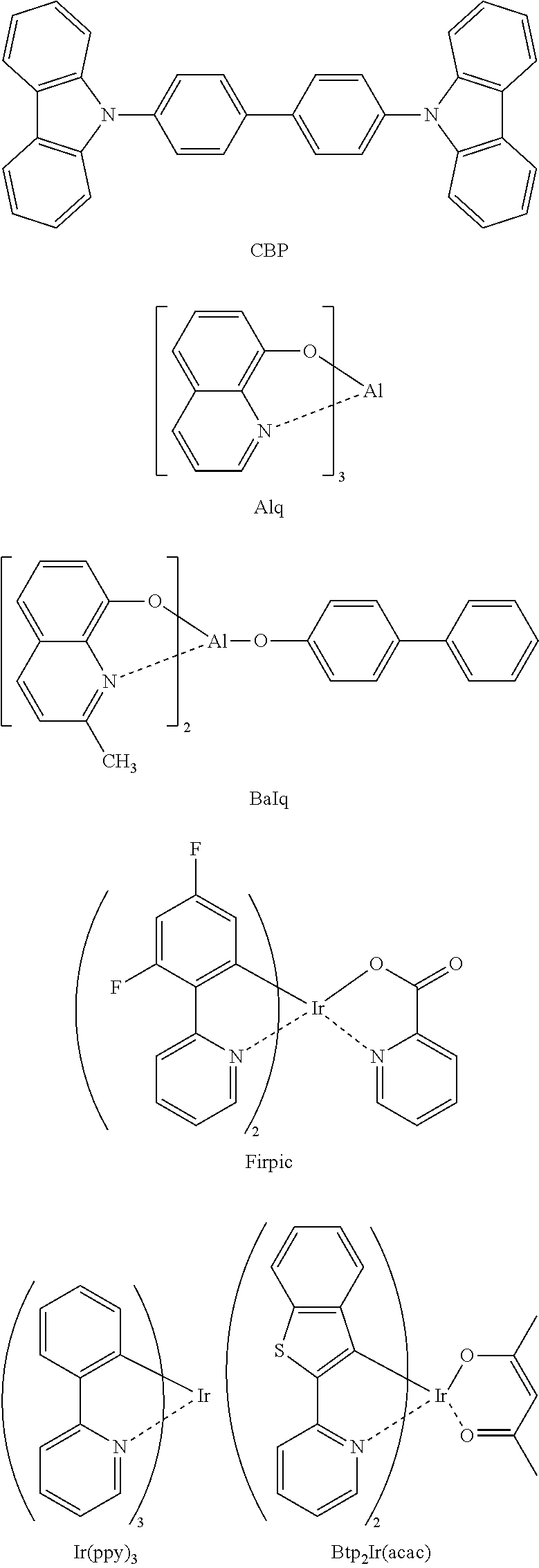Organic electroluminescence device, method of manufacturing organic electroluminescence device, display apparatus and illumination apparatus
a technology of organic electroluminescence and electroluminescence device, which is applied in the direction of solid-state devices, semiconductor devices, thermoelectric devices, etc., can solve the problems of exacerbating el properties, deterioration of organic electroluminescence device luminous efficiency and durability, and insufficient luminous efficiency, durability and color reproducibility, etc., to achieve high luminous efficiency, reduce manufacturing cost, and reduce the effect of drive voltag
- Summary
- Abstract
- Description
- Claims
- Application Information
AI Technical Summary
Benefits of technology
Problems solved by technology
Method used
Image
Examples
example 1
[0175]A glass substrate having a deposition layer of iridium tin oxide (abbreviated as ITO) (manufactured by GEOMATEC Corporation, surface resistance: 10 Ω / sq., size: 0.5 mm thickness, 2.5 by 2.5 centimeters square) was placed in a cleaning vessel, and subjected to ultrasonic cleaning in 2-propanol. Then, UV-ozone treatment was given to the cleaned substrate for 30 minutes. On the thus obtained transparent anode, the following layers were provided in succession by use of a spraying method. In the formation of each layer, the carrier gas (N2) quantity of an aerosol used and the size of liquid particles in the aerosol were adjusted to 1 L / min and 1 μm, respectively.
(1) Hole transporting layer (40 nm): By using the spraying method, poly(3,4-ethylenedioxythiophene) poly(styrenesulfonate) (PEDOT:PSS) (1 mass % aqueous dispersion liquid, AI4083, manufactured by Bayer AG, mass-average molecular weight: 10,000) was coated on the transparent anode in an amount to give a thickness of 40 nm to...
example 2
[0177]By carrying out the same procedure as in Example 1, except that the first light emitting layer was formed in the following step, an organic EL device of Example 2 was made wherein each of the hole transporting layer, the second light emitting layer and the third light emitting layer was formed in film according to the spraying method and the first light emitting layer was formed in film according to a deposition method.
(2) First light emitting layer (Blue light emitting layer) (10 nm): By using a vacuum deposition method, CBP and Firpic were deposited on the hole transporting layer in amounts to have a ratio of 85:15 by mass and give a thickness of 10 nm to a first light emitting layer obtained.
example 3
[0178]By carrying out the same procedure as in Example 1, except that the first light emitting layer and the second light emitting layer were formed in the following steps, an organic EL device of Example 3 was made wherein each of the hole transporting layer and the third light emitting layer was formed in film according to the spraying method and each of the first light emitting layer and the second light emitting layer was formed in film according to a deposition method.
(2) First light emitting layer (Blue light emitting layer) (10 nm): By using a vacuum deposition method, CBP and Firpic were deposited on the hole transporting layer in amounts to have a ratio of 85:15 by mass and give a thickness of 10 nm to a first light emitting layer obtained.
(3) Second light emitting layer (Green light emitting layer) (10 nm): By using a vacuum deposition method, CBP and Ir(ppy)3 were deposited on the first light emitting layer in amounts to have a ratio of 95:5 by mass and give a thickness o...
PUM
| Property | Measurement | Unit |
|---|---|---|
| size | aaaaa | aaaaa |
| size | aaaaa | aaaaa |
| temperature | aaaaa | aaaaa |
Abstract
Description
Claims
Application Information
 Login to View More
Login to View More - R&D
- Intellectual Property
- Life Sciences
- Materials
- Tech Scout
- Unparalleled Data Quality
- Higher Quality Content
- 60% Fewer Hallucinations
Browse by: Latest US Patents, China's latest patents, Technical Efficacy Thesaurus, Application Domain, Technology Topic, Popular Technical Reports.
© 2025 PatSnap. All rights reserved.Legal|Privacy policy|Modern Slavery Act Transparency Statement|Sitemap|About US| Contact US: help@patsnap.com



